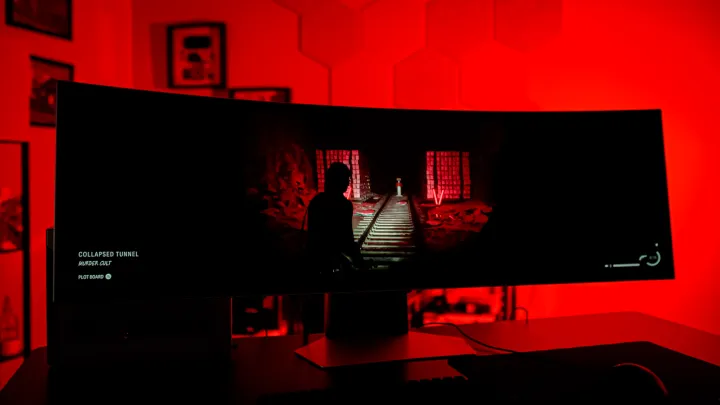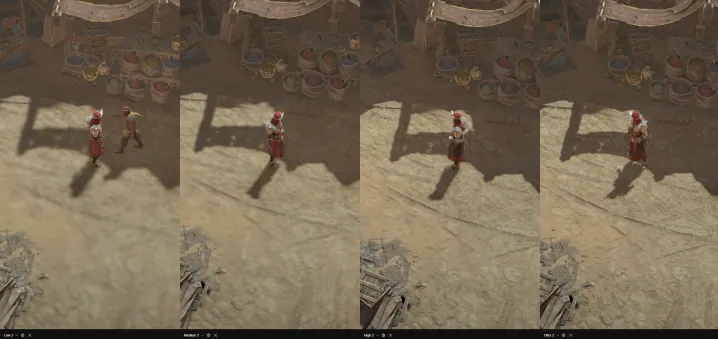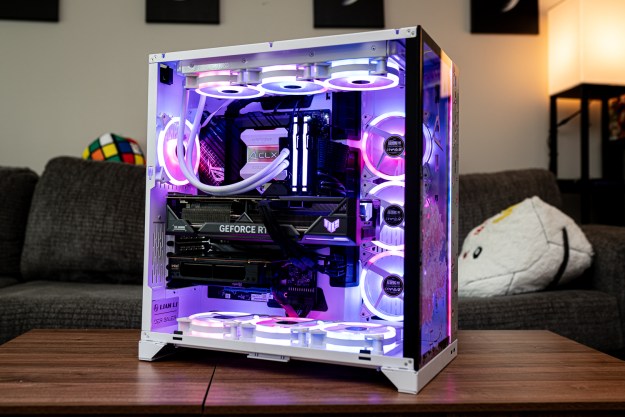
Alan Wake 2 is one of the most beautiful games I’ve ever played — and it’s the frontrunner for the most demanding PC game you can currently run. For as impressive as the game is, from its path-traced reflections to the extensive use of Nvidia tech, it’s so demanding that some otherwise-powerful PCs won’t be able to post playable frame rates.
It’s clear developer Remedy set out to create a certain atmosphere with Alan Wake 2 that can only be captured with photorealistic visuals. That said, Alan Wake 2 is proof that more PC games need to adopt a stripped-back graphics setting, even if that means sacrificing a part of what makes the game special.
What in the world is a potato mode?
A potato mode is something so easy to run that you could run it on a potato — not literally, of course, but that’s the sentiment. It’s a kill switch graphics option that will only be used by a small fraction of PCs, but it can help the least powerful (and least expensive) rigs at least run an otherwise demanding PC game.
Alan Wake 2 is missing this type of graphics setting. The game includes three presets that offer a narrow range for performance and image quality, and it needs a setting that scales lower.
We’ve seen a few good examples of that this year, manifesting either in the Low preset, or an extra special Lowest preset. Diablo 4 handles this well, providing the Low FX option to severely cut back the image quality. Similarly, Baldur’s Gate 3, despite only being supported on SSDs, has a setting tailored for those running the game on an HDD.

Even without a dedicated preset, you can see that kind of scalability with some modern games. Basically any title that uses Capcom’s RE Engine features a cutback graphics mode that kills a lot of the visual features and severely reduces texture quality. It’s probably not a coincidence that some of the first AAA games coming to iPhone are Resident Evil Village and Resident Evil 4. Both use the RE Engine.
It’s also no surprise that these games run great on devices like the Steam Deck. Baldur’s Gate 3, Diablo 4, and all of the RE Engine games all perform fantastically on this mobile hardware. They can scale up to accommodate much more powerful rigs, with games like Resident Evil 4 even sporting ray tracing, but they can also nuke the visual fidelity just to get the games to run on less powerful hardware.
If you look at the system requirements for games like Ratchet and Clank: Rift Apart, Dead Space, and Starfield — all games without last-gen console versions that released on PC this year — there are some interesting comparisons to Alan Wake 2. The recommended settings for all of these games is very close to the minimum requirements for Alan Wake 2. These games, however, all have graphics settings that severely reduce visual quality, allowing the minimum requirements to scale lower.
Players need to have reasonable expectations about these types of graphics modes, especially in a game like Alan Wake 2 where atmosphere is so important. Still, the option should be there to run the game, even if that means significantly cutting back on the games graphical quality.
But mesh shaders!

Alan Wake 2 has an argument for not having a potato mode graphics option: mesh shaders. If you haven’t caught up on the discourse, GTX 10-series and RX 5000 series (or older) GPUs aren’t technically supported in Alan Wake 2. That’s because the game relies on mesh shaders through DirectX 12 Ultimate, which isn’t supported on every graphics card.
Mesh shaders have been around for a few years, but Alan Wake 2 is the first game to actually require them. It was going to be a messy transition regardless, but a Very Low or Lowest graphics preset in a game like Alan Wake 2 would help bring those first GPUs with mesh shading support up to par. There’s still a wide swath of graphics cards that are technically supported in Alan Wake 2 that could benefit from a lower graphics preset — cards like the GTX 16-series and RTX 20-series, both of which support mesh shaders, but fall just outside of solid performance in the game.
It’s fine to transition to a new rendering pipeline with mesh shaders — GTX 10-series GPUs are seven years old, after all, so you shouldn’t expect them to hold up in modern games like they did in 2016. But for those older and cheaper GPUs that technically fall under support for Alan Wake 2, a potato mode would help bring them up to a reasonable level of performance in exchange for a trade-off in image quality.
Still a massive effort

There’s no way to talk about this topic in a vacuum. For as important as it is to have a bare minimum graphics mode in games, the reality is that it’s just not possible in a lot of games. It takes active effort and development time, so it’s not as if a developer can flip a switch and get a game to scale to down to the lowest settings possible without some major issues.
That’s why games like Resident Evil 4 and Baldur’s Gate 3 that can scale to accommodate a wide range of hardware are such standouts. It’s a technical decision that likely needs to be made early in development, and even then, it’s possible some games may not be able to scale down past a certain point. That might mean some games, such as Alan Wake 2, will prompt a PC upgrade.
Even with that in mind, it’s an important segment of PC gamers to keep in mind, as the backlash from Alan Wake 2‘s demanding hardware requirements proves. Most major PC releases focus on how far you can push the visual quality, but it’s just as important for games to keep in mind how much you can cut back the visual quality as well.
Editors' Recommendations
- The best video games of October 2023: Mario, Spider-Man 2, and more
- Alan Wake 2 on PC is an embarrassment of riches
- 23% of PC gamers probably can’t play Alan Wake 2. Here’s why
- Alan Wake 2’s Sam Lake explains Twin Peaks: The Return’s ‘bold’ influence
- This Noctua-themed gaming PC is a bespoke beauty — and you can buy it




